When running an online store or e-commerce business, online promotion is essential. Paid advertising on various platforms is a major driver of online promotion, offering benefits like increased brand awareness and targeted lead generation. This approach works for businesses of all sizes.
To advertise online, you can join ad platforms to display your ads. You simply set up your ad campaigns, and the platform will distribute them across the web. You’ll only be charged when someone clicks on your ad.
So, which advertising platforms are right for you? Today, this article will recommend the top 5 largest advertising platforms in the world. You might already be familiar with some of them. After learning more about them, you can make an informed decision. If your budget allows, multi-platform promotion is also a viable option.
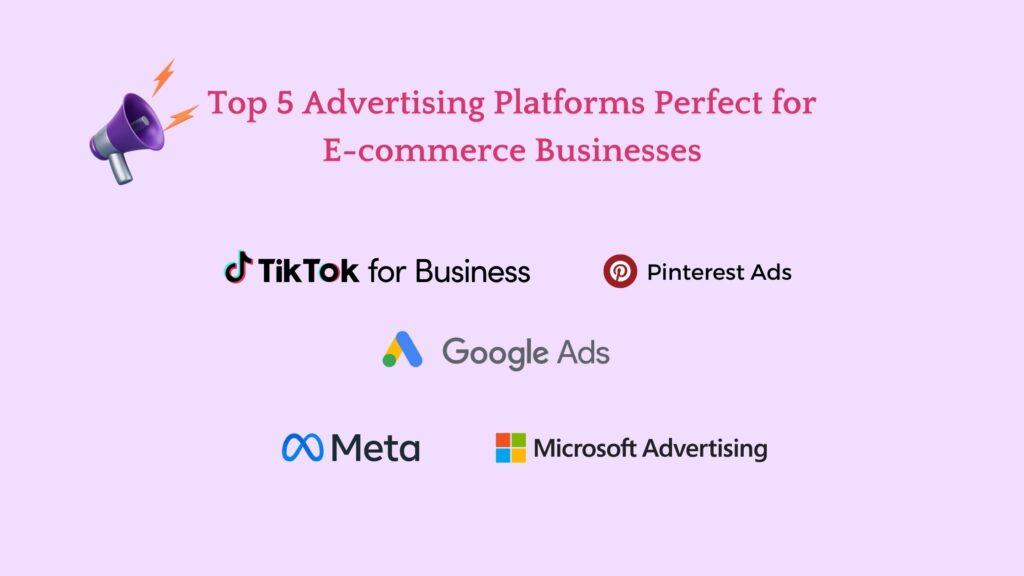
What is CPC/PPC
CPC (Cost Per Click) and PPC (Pay Per Click) are two terms frequently used in online advertising. While they have distinct meanings within the digital marketing landscape, they are often used interchangeably in many situations.
CPC refers to the cost an advertiser pays for each click on their ad, while PPC is a broader advertising model where advertisers pay for each click. Essentially, CPC is a metric within the PPC model.
Sure, here is a fluent and natural English translation of the sentence:
In essence, both CPC (Cost-Per-Click) and PPC (Pay-Per-Click) involve advertisers paying a fee to advertising platforms and publishers whenever visitors click on their ads. These models represent the primary billing structure for the advertising platforms discussed today
1. Google Ads and YouTube Ads
The world’s largest online advertising platform is Google Ads. “Google AdWords” was the previous name for what is now known as Google Ads. In 2018, Google rebranded its advertising platform from “AdWords” to “Google Ads” to better reflect the full range of advertising options available beyond just keyword-based search advertising.
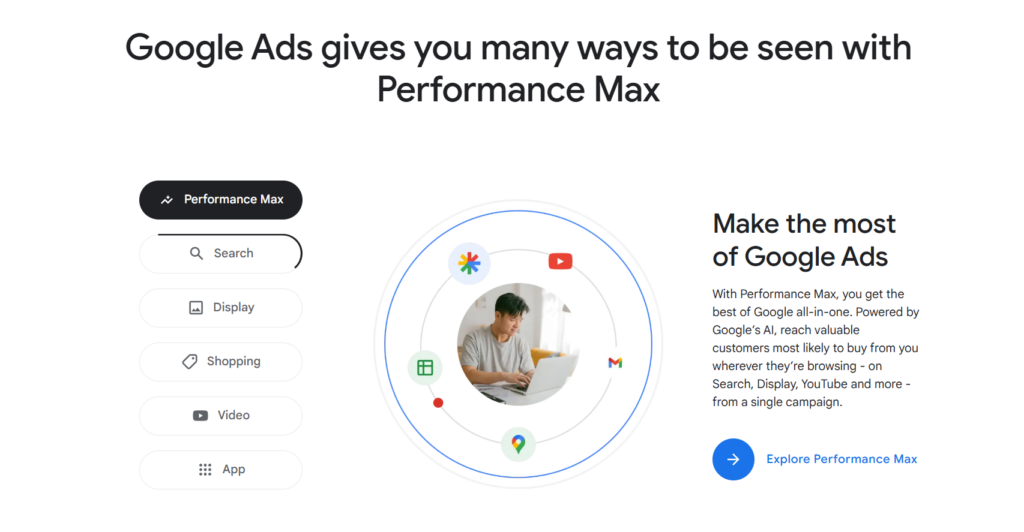
For businesses of all sizes, it’s the first name that comes to mind for online advertising and product promotion. As the global search engine leader, Google boasts a massive user base worldwide and can display advertiser’s ads within its search engine, transcending national borders.
Crucially, Google Ads supports global websites joining its platform Google Adsense, this means placing the advertiser’s ads in every corner of the internet, leveraging websites as a fundamental component of the online landscape.
In addition, YouTube, a video platform owned by Google, is the largest long-form video platform globally. With YouTube channels, Google Ads enables businesses to create video ads and insert them into YouTube videos. and Google Ads can help seller promote their goods on Google Shopping too.
Despite Google and YouTube being part of the same company, Google Ads and YouTube Ads are distinct advertising systems. However, they can be managed and campaigns created through the Google Ads backend, then distributed individually.
The Primary ad formats of Google Ads include search ads, display ads, Shopping ads, and video ads, and with the rise of smartphones, Google Ads can also showcase ads within mobile Apps. In essence, by joining the Google and YouTube advertising platforms, you can reach billions of users with your ads.
2.TikTok for Business(TikTok Ads)
TikTok for Business is essentially TikTok’s advertising platform, with TikTok Ads being a key component. As a video platform, TikTok’s advertising model differs somewhat from Google’s, offering a variety of ad formats including In-Feed Ads, TopView Ads, Branded Hashtag Plus, Collection Ads, Branded Effects, Spark Ads, and Dynamic Showcase Ads. These diverse ad types are all focused on promoting content within the TikTok platform.
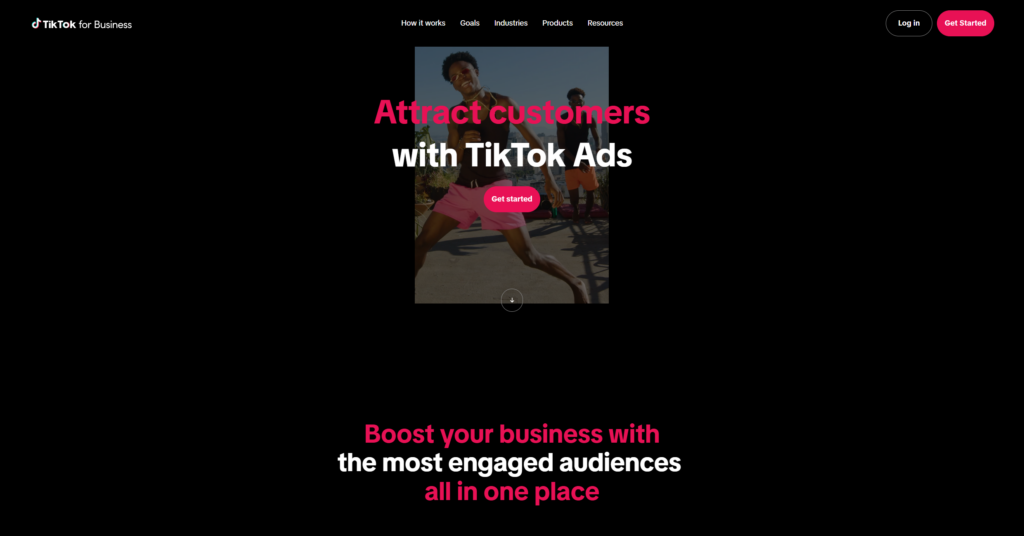
Let’s learn some ad types on TikTok:
- In-Feed Ads: Grab attention with video ads that fit right into users’ feeds like regular posts.
- TopView Ads: Make a big impact with video ads that show up first when users open the app.
- Branded Hashtag Challenges: Get users involved by creating hashtag challenges that encourage them to make and share their own videos.
- Collection Ads: Show off multiple products or services in a fun, interactive carousel.
- Branded Effects: Add some excitement to user content with branded AR filters that are both fun and interactive.
- Spark Ads: Team up with TikTok creators to promote your brand through engaging videos.
- Dynamic Showcase Ads: Use AI to show users products they’ll love, based on what they’re interested in and what they’ve been browsing.
As the world’s largest short video platform, TikTok has now become the number one social platform globally, with nearly 2 billion users worldwide. In the United States alone, it boasts over 170 million users, meaning nearly half of the U.S. population uses TikTok.
With its expanding user base, TikTok has shifted from merely a platform for sharing short videos and socializing to one where business promotion is a key focus. This evolution led to the creation of TikTok for Business, which enables users to promote their videos, products, and services comprehensively.
Although businesses can only use TikTok Business to promote products on TikTok, the platform’s increasing popularity and high user engagement levels make it a powerful advertising tool. The predominantly young user base, which has significant purchasing power, further enhances the effectiveness of product promotion on TikTok Business. Additionally, the cost per click for TikTok Ads is generally lower than that of Google Ads, making it a cost-effective advertising option.
3. Meta Ads (Facebook & Instagram)
Meta Ads is a combined platform that includes Facebook Ads, Instagram Ads, and WhatsApp Ads. Facebook Ads has consistently been the second-largest advertising platform globally, with Google Ads being the first.
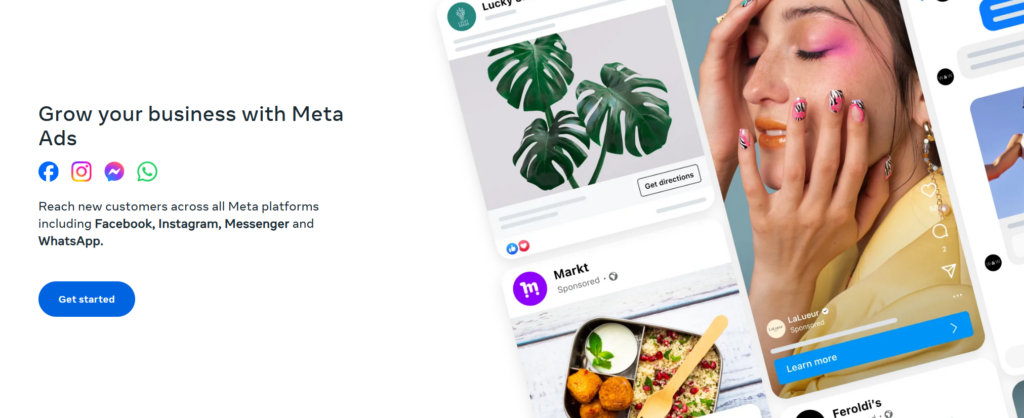
The name “Meta” was introduced on October 28, 2021, when Facebook Inc. rebranded as “Meta” to serve as the overarching brand for its major social media platforms, including Facebook, Instagram, and WhatsApp. Meta also views virtual reality (VR) as a core strategy for its future development. Today, Meta’s various platforms collectively have an estimated 3 billion users.
As a social advertising platform, Meta Ads is quite similar to TikTok, offering a variety of ad formats. However, Meta Ads provides more diverse content, including image and story ads. Like TikTok, the ads on this platform are limited to Facebook, Instagram, and WhatsApp.
These social platform ads can all be managed on the Meta Ads platform, allowing you to create campaigns in one place that are compatible with multiple platforms. However, each platform has different costs due to varying popularity and competition, with Facebook Ads being the most expensive.
With the rise of short videos, I believe TikTok Ads may have a brighter future, which is why I rank Meta Ads third. In reality, Meta Ads has a larger overall user base compared to TikTok. When choosing, it’s essential to consider your needs and budget. If you have a sufficient budget, TikTok Ads should not be overlooked.
Pros
Cons
Sale: ✨ no specific coupons or deals Currently
4. Microsoft Ads
Microsoft Ads, also known as the advertising platform from the IT giant Microsoft, is a viable alternative to Google Ads. If you’re in the market for a Google Ads substitute, Microsoft might be just what you need.
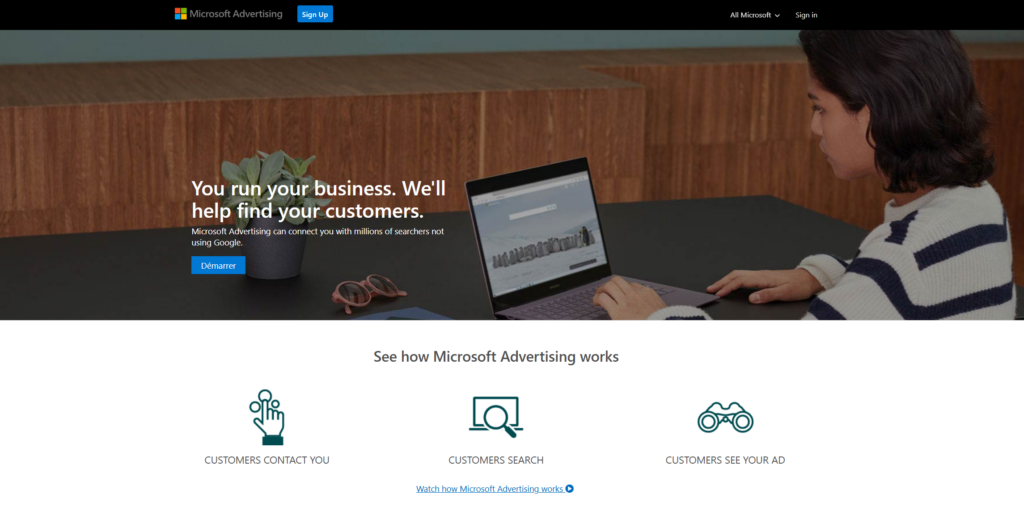
Primarily based on search engines, Microsoft Ads has seen decent growth over the years, especially with the development of Microsoft’s Bing search engine. While its user base might not be as extensive as Google’s, Microsoft Ads still reaches a considerable audience, covering Bing, MSN, Yahoo, and AOL sites.
Microsoft Ads, like Google Ads, allows website owners to join and display Microsoft advertisements on their sites, greatly expanding the reach of these ads.
Furthermore, Microsoft Ads also supports advertising on LinkedIn, enabling advertisers to target their audience based on LinkedIn profile information. Because LinkedIn is more like a corporate social platform, Microsoft Advertising is very powerful in the B2B field.
As the world’s largest PC operating system, Microsoft can even place ads on various Windows products such as the Windows search box, Outlook, Skype, Xbox, and the Microsoft Store. This broad coverage rivals Google’s, but some users may find certain ads integrated into the Windows system less appealing.
Overall, Microsoft serves as a solid alternative to Google Ads, with relatively lower click costs.
5. Pinterest Ads
Pinterest is a specialized social platform for sharing image content, distinct from Instagram in that users can directly share images from any website, allowing visitors to navigate back to the site through the images. This model enables many websites to promote and drive traffic through Pinterest, with numerous e-commerce sellers directly pinning their site’s images on Pinterest for traffic generation. Consequently, Pinterest has opened its advertising platform to help businesses acquire more traffic through their platform.
As a social platform, Pinterest ads share features with Facebook ads and TikTok ads, such as Carousel Ads and Collections Ads. Additionally, Pinterest allows users to post videos, so Pinterest ads also incorporate video advertising. It’s important to note that Pinterest Ads primarily display within the Pinterest platform, reaching its dedicated user base.
While Pinterest’s user base is smaller compared to other platforms, it still boasts around 500 million users. Its effectiveness in driving traffic is remarkable, possibly due to its all-image content nature, which is visually appealing and leads to higher click-through rates.
In terms of cost, Pinterest Ads are generally considered affordable, making them a viable investment and avenue for small to medium-sized businesses seeking to expand their reach.

Pros
Cons
Sale: ✨ no specific coupons or deals Currently
5 Advertising Platforms comparison in form
| Platform | Google Ads YouTube Ads | TikTok Business (Tiktok Ads) | Meta Ads (Facebook & Instagram) | Microsoft Ads | Pinterest Ads |
|---|---|---|---|---|---|
| User Base | Billions of users globally | 1.7 billion monthly active users | 3 billion monthly active users | Billions of users globally | 0.5 billion monthly active users |
| Ad Formats | Search Ads, Display Ads, Shopping Ads, Video Ads, App Ads | In-feed ads, TopView Ads, Branded Hashtag plus, Collection Ads, Branded Effects, Spark Ads, Dynamic Showcase Ads | Image Ads, Video Ads, Carousel Ads, Slideshow Ads, Collection Ads, stories ads | Search Ads, Shopping Ads, Display Ads | Promoted Pins, Promoted Video Pins, Shopping Ads, Carousel Ads, Collections Ads |
| Targeting Options | Keywords, Demographics, Interests, Geographical Location, Device | Age, Gender, Interests, Device, Custom Audiences, Lookalike Audiences | Demographics, Interests, Behaviors, Lookalike Audiences, Custom Audiences | Keywords, Demographics, Device, Location, Day & Time, Audience Targeting | Keywords, Interests, Demographics, Custom Audiences, Actalikes |
| Focus | Search intent, Driving immediate sales, Increasing website traffic, keyword targeting | Reaching younger audiences, Viral marketing campaigns, Engagement, trends, | Brand awareness, Retargeting campaigns | Search intent, competitor targeting | Inspiring Product discovery, visual search |
| Click Pricing | relatively high | relatively low | relatively high | low | low |
Conclusion
As for choosing the right one, it depends on your business type. Make your decision based on your needs and budget.
Google Ads remains the top consideration for many, but if you’re looking for noticeable results, TikTok and Pinterest might be better choices at the moment. These two platforms boast strong user engagement, especially TikTok for business, with promising advertising prospects.
Of course, Facebook has a massive user base and offers powerful targeting options, while WhatsApp and Instagram also have large user bases.
If you’re in the B2B sector, Microsoft Ads is undoubtedly the best choice, especially if you have a limited budget. It may yield some unexpected results since Microsoft is the only platform that can advertise on some specific platforms.
Ultimately, before committing, gather information, conduct testing (including A/B testing different platforms and ad formats), and develop an omnichannel marketing strategy. This way, you can effectively promote your products and services from various angles.






